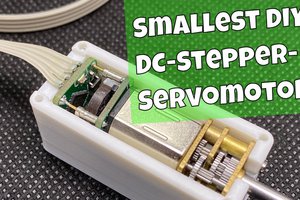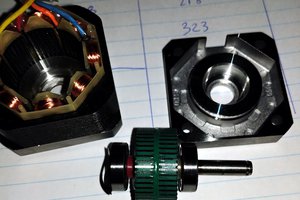I bought a Roland MDX-15 mill from eBay, it came without the spindle motor. I've set about finding a replacement motor.
So far I've found a hobbyist 19V multitool and found the pos/neg pins on the spindle motor connector. The mill has the ability to jog the z-axis directly on the machine using two keys on the control panel. When I jog the z-axis the spindle motor starts (as it should). Easy...
As soon as I release the jog button the spindle stops (as it should), however, this is immediately followed by all LEDs flashing. According to the manual, this indicates the spindle motor connection has been disconnected. After thoroughly checking the connections, the problem persists.
I began to wonder if this has something to do with back EMF and flyback diodes or lack of capacitance.
I've soldered a capacitor across the motor terminals but with no luck. I've also tried loading the motor so that when the motor power stops the rotor will produce a lower kickback voltage, this had worked on some occasions.
When loading the motor I did discover that it can stall very easily, causing a different error on the mill indicating over current.
I reached out to Johan (who has been featured on HaD before), and he supplied me with some images from under the hood of an original spindle motor. It shows something that looks like fuse-links in series with the motor.
I reverse-engineered the spindle control section of the mainboard and added the components from the original spindle motor pcb.
I need help finding how the spindle motor PCB connects to the ground, in case this has something to do with kick-back/emi?
I want to replace the motor in this circuit with some 'dummy' load so the mill thinks a spindle is connected, I then want to use the dummy load to switch an external motor controller on.
Any help here is greatly appreciated.

 Frank Herrmann
Frank Herrmann
 Thomas
Thomas

 salim BGZ
salim BGZ
They do not look like fuses, but EMI filters.